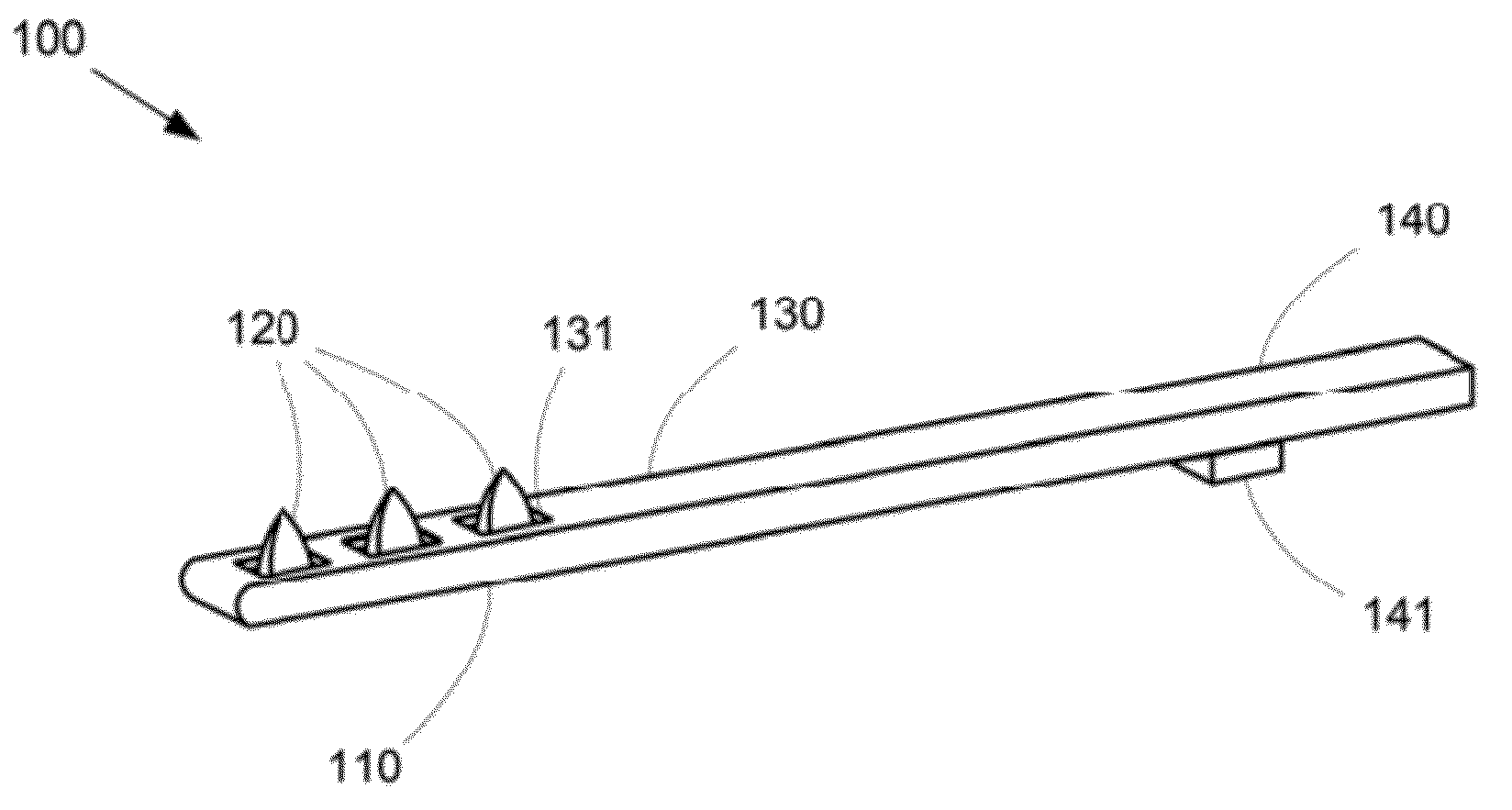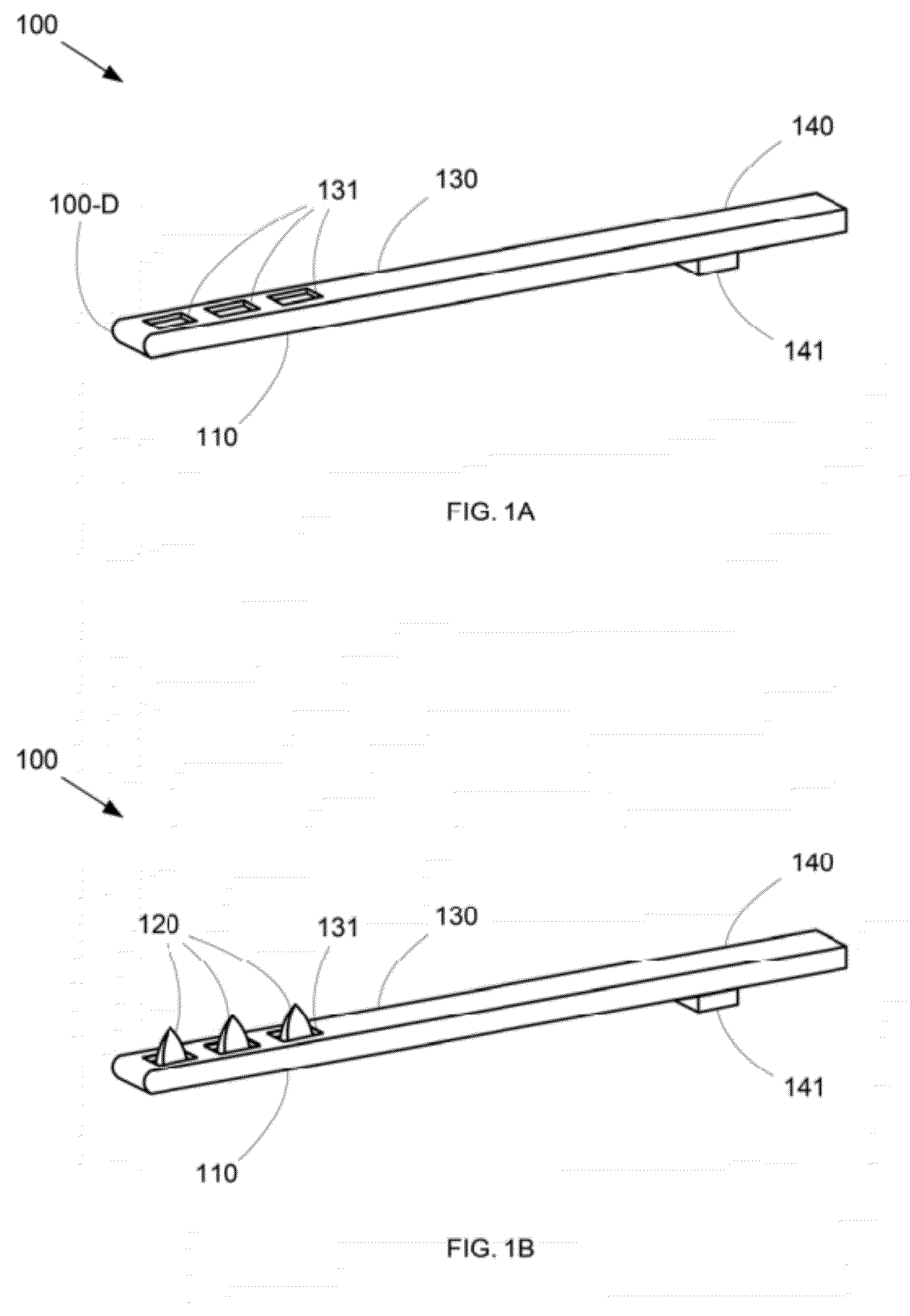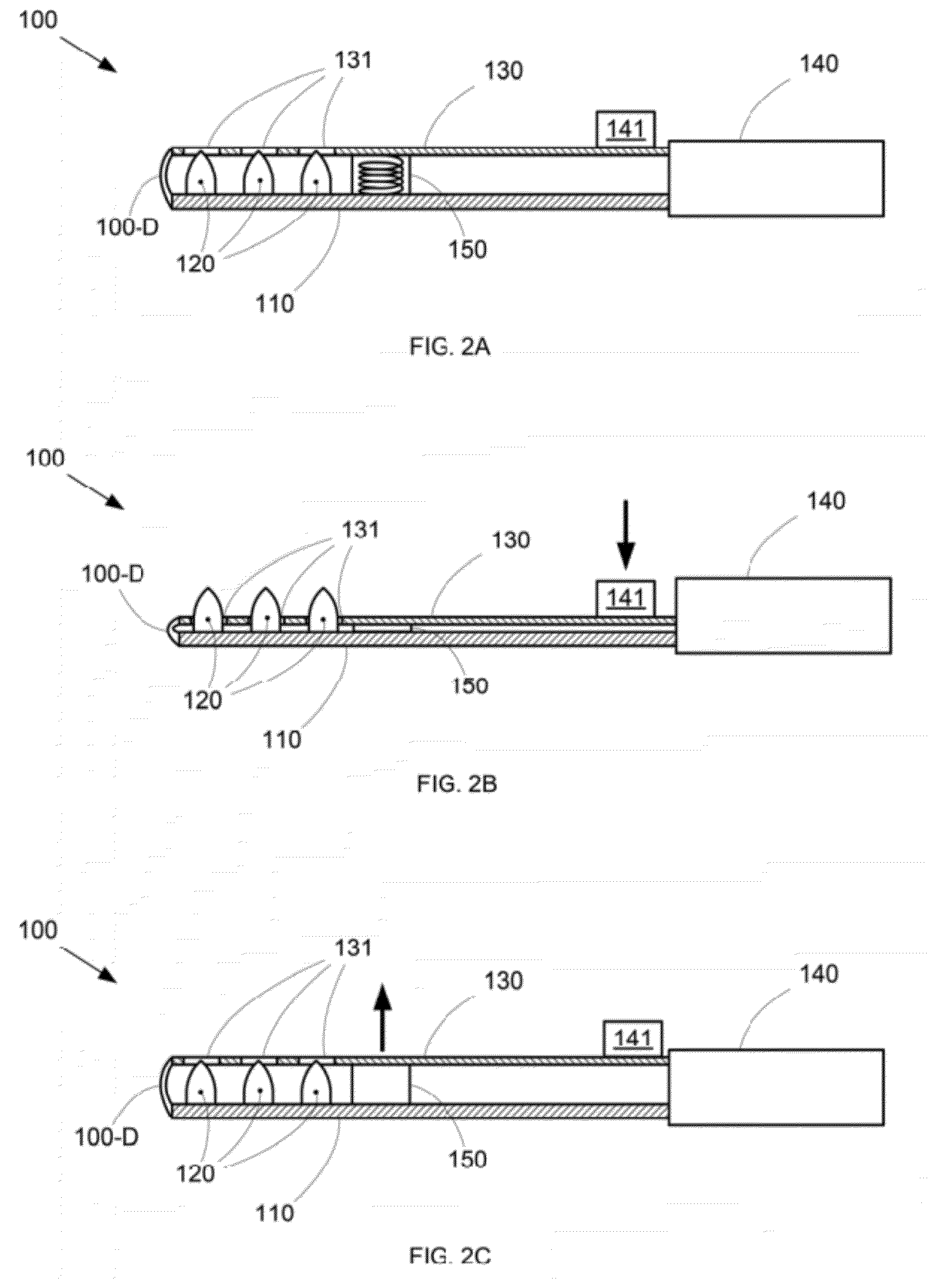Tissue structure perforation system and method
a tissue structure and perforation technology, applied in the field of tissue structure perforation system and method, can solve the problems pain and problematic symptoms of carpal tunnel syndrome, and permanent nerve damage, and achieve the effects of reducing pain and problematic symptoms, reducing the risk of cts, and prolonging the tissue structur
- Summary
- Abstract
- Description
- Claims
- Application Information
AI Technical Summary
Benefits of technology
Problems solved by technology
Method used
Image
Examples
Embodiment Construction
[0026]By providing an elongated tool with one or more retractable blades, modification of a tissue structure via perforation can be performed to beneficially enable lengthening of that tissue structure. For example, the transverse carpal ligament can be lengthened in such a manner, thereby relieving pressure on the median nerve. In this manner, the painful and problematic symptoms of carpal tunnel syndrome (CTS) can be alleviated without fully severing the transverse carpal ligament, which in turn may minimize the loss of grip strength and / or hand and wrist range of motion associated with surgical treatments for CTS.
[0027]FIGS. 1A and 1B show an exemplary tissue perforator 100 that includes an elongate base 110 that extends from a handle (i.e., gripping area) 140 to a distal tip 100-D. In various embodiments, distal tip 100-D can be blunt, curved, narrowed, rounded, tapered, and / or otherwise shaped to minimize the chances of damage to surrounding tissue during use. As shown in FIG. ...
PUM
 Login to View More
Login to View More Abstract
Description
Claims
Application Information
 Login to View More
Login to View More - R&D
- Intellectual Property
- Life Sciences
- Materials
- Tech Scout
- Unparalleled Data Quality
- Higher Quality Content
- 60% Fewer Hallucinations
Browse by: Latest US Patents, China's latest patents, Technical Efficacy Thesaurus, Application Domain, Technology Topic, Popular Technical Reports.
© 2025 PatSnap. All rights reserved.Legal|Privacy policy|Modern Slavery Act Transparency Statement|Sitemap|About US| Contact US: help@patsnap.com



